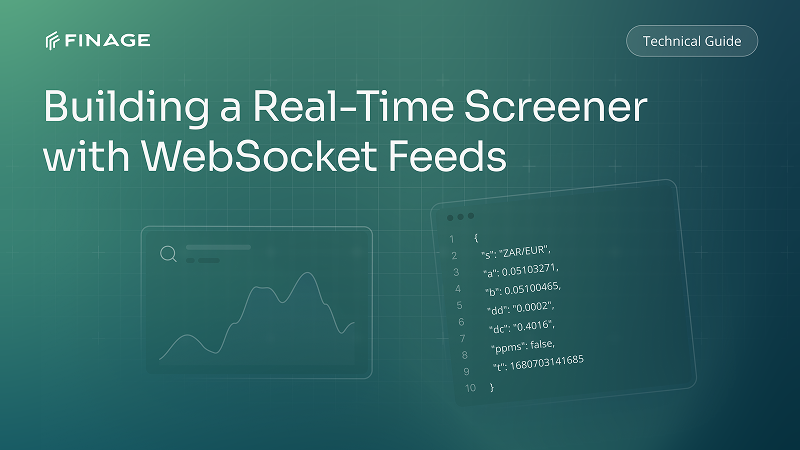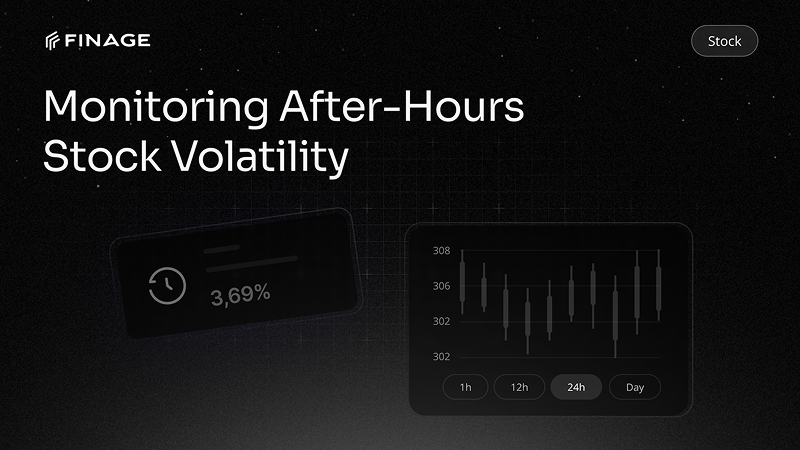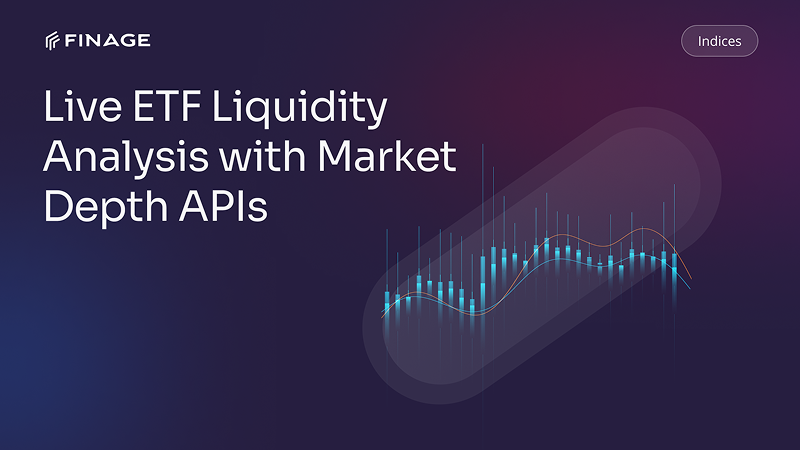From Idea to MVP: How Innovation Happens in Fintech
7 min read • July 24, 2025
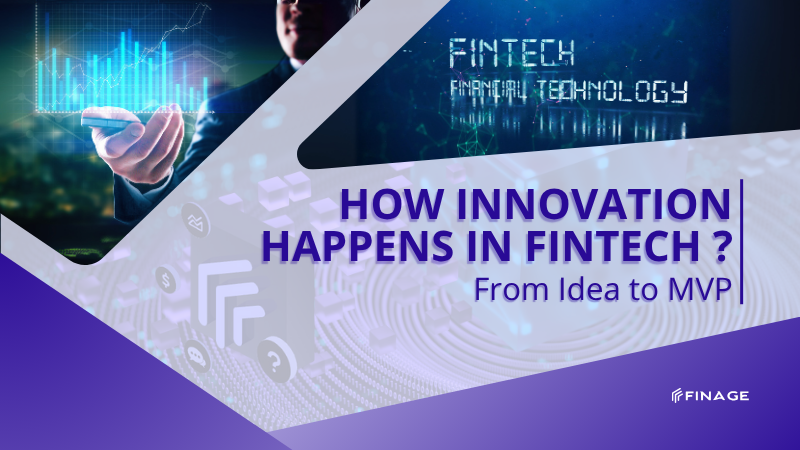
Introduction
In fintech, ideas are cheap, but execution is everything. Every day, brilliant product concepts surface in pitch decks, Slack channels, and late-night brainstorms. But only a few of them ever become real. Fewer still survive the journey to MVP, where real users engage, real data flows, and real-world value is tested.
That transformation, from raw idea to working product, is where fintech innovation happens. It’s messy. It’s fast. And it’s never linear.
So, how do modern fintech teams take a concept and turn it into something tangible, testable, and valuable? What makes the difference between a passing thought and a product with traction?
This blog unpacks the practical side of fintech innovation: what it really takes to get from idea to MVP, and how the right data infrastructure can accelerate every step along the way.
Table of Contents
- Understanding Fintech Innovation Beyond the Buzz
- The Real Journey from Idea to MVP
- Core Building Blocks of Fintech MVPs
- Why Data Access is a Catalyst for Fintech Innovation
- How Finage Supports Faster, Smarter Product Development
- Final Thoughts
1. Understanding Fintech Innovation Beyond the Buzz
Let’s be honest, “innovation” might be one of the most overused words in fintech. It’s on every slide deck, every press release, and every LinkedIn post. But when you strip away the jargon, what does fintech innovation mean?
It’s not just about launching something new. It’s about solving actual user problems with better, faster, and more inclusive financial tools.
True fintech innovation looks like:
- Automating a process that used to take days
- Giving underbanked users access to services once out of reach
- Delivering insights in real time instead of overnight reports
- Designing for mobile-first audiences with seamless UX
More often than not, innovation starts small. A feature request. A customer pain point. A regulatory change. What makes it innovative is not the technology itself, but how that technology is applied to create measurable improvements.
This is why fintech teams that succeed in innovation are usually the ones closest to the customer, and the ones who know how to build fast without sacrificing precision.
Because at its core, fintech innovation isn’t about hype. It’s about creating products that change how people interact with money.
2. The Real Journey from Idea to MVP
Every product starts with a spark, an idea scribbled in a notebook, a “what if” during a team call, or a late-night realization that something could be done better. But in fintech, getting from that spark to a working MVP is where things get real.
It’s not just about writing code. It’s about validation, iteration, and building trust in an industry where mistakes can cost money, or worse, credibility.
Here’s what that journey typically looks like:
Step 1: Clarify the Problem
Before building anything, teams need to define the actual user problem they’re solving. In fintech, this often involves compliance, security, and market dynamics, not just UX.
Step 2: Map Out Core Functionality
MVPs aren’t supposed to be feature-complete. The goal is to identify which functions are essential to test the concept. Payments? Data retrieval? Identity checks?
Step 3: Choose the Right Stack
Performance, scalability, and speed matter. Choosing infrastructure, especially your market data provider, at this stage impacts every step going forward.
Step 4: Prototype → Test → Iterate
Quick feedback loops are crucial. Whether it’s internal testing or early beta users, the faster you learn, the faster you improve.
Step 5: Launch a Lean MVP with Real Data
A fintech MVP isn’t just a wireframe. It’s a working model that connects to live data, processes transactions, or reflects actual market conditions. That’s where the real stress testing begins.
Throughout this process, flexibility and data agility are non-negotiable. APIs that are slow to integrate or limit experimentation will slow you down. MVPs aren’t meant to be perfect, but they must be usable, valuable, and ready to grow.
3. Core Building Blocks of Fintech MVPs
Fintech moves fast, but building something that works takes more than just speed. Every MVP that makes it past launch has a few critical building blocks in common. Miss one, and the whole product risks falling apart.
Here are the foundational elements every fintech innovation relies on:
Authentication & Security
You’re dealing with sensitive financial data. From day one, your MVP needs secure authentication, whether through OAuth, two-factor login, or encrypted tokens.
Regulatory Readiness
Even in MVP form, fintech products live under tight rules. Whether it’s GDPR, KYC/AML, or SEC reporting, you can’t ignore compliance, especially if you want to scale.
Access to Financial Data
Without real-time market data, pricing feeds, or company fundamentals, your product is flying blind. A robust financial data infrastructure isn’t a “nice to have”, it’s core to the experience.
Clean and Minimal UI
Early users won’t tolerate confusion. Interfaces should be intuitive, frictionless, and optimized for both web and mobile from the start.
Scalable Architecture
Even a lean MVP should be built with scale in mind. Using APIs that can grow with your user base and won’t bottleneck your backend is key.
When these pieces come together, you’re no longer just building an MVP. You’re laying the groundwork for a product that can iterate fast, earn trust, and scale when ready.
And it’s in this intersection, between security, usability, and data access, that real fintech innovation begins to show.
4. Why Data Access is a Catalyst for Fintech Innovation
Behind every great fintech product is one unglamorous but vital truth: data access.
Whether you’re pricing assets, building dashboards, running simulations, or training algorithms, if your data isn’t reliable, fast, and flexible, you’re building on sand.
That’s why fintech innovation doesn’t just depend on great ideas or clean code. It depends on access. To the right data. At the right time. In the right format.
Here’s how solid data infrastructure changes the game:
It Reduces Time-to-Market
Instead of spending weeks stitching together unreliable feeds or parsing outdated CSVs, teams can plug into modern APIs and go live faster.
It Improves Product Accuracy
Pricing, analytics, and risk calculations all rely on trustworthy, real-time inputs. Bad data leads to bad outcomes.
It Enables Continuous Iteration
MVPs are built to learn. Real-time data helps teams test assumptions, measure behavior, and adjust fast, all without waiting on batch updates.
It Unlocks Use Cases You Might Not Have Planned For
As your product evolves, you might want to add new markets, offer portfolio insights, or enable algo trading. The right data provider grows with you.
When data is hard to access, or worse, inconsistent, teams slow down. Ideas get shelved. Launches get delayed. Features stay in draft.
But when data is fluid, clean, and on-demand, your entire product pipeline speeds up. Innovation doesn’t just happen more often; it happens with less risk and more confidence.
5. How Finage Supports Faster, Smarter Product Development
Fintech innovation isn’t just about dreaming big; it’s about delivering fast. And that requires a tech stack that moves with you, not against you. This is where Finage comes in.
Finage is designed for builders. Whether you’re launching your first MVP or scaling a growing platform, it gives you the tools and infrastructure to stay agile and focused.
Here’s how Finage accelerates fintech innovation at every stage:
Unified APIs Across Markets
Stocks, forex, crypto, indices, you don’t need five different providers. Finage delivers all of it in one consistent structure, so your data integrations stay simple and clean.
Real-Time & Historical Data
Need tick-level pricing? Long-range backtesting? Finage offers both. Real-time market feeds and deep historical data come together in one seamless platform.
Developer-First Documentation
Forget vague instructions or outdated guides. Finage’s docs are written for real-world use, so your team can integrate quickly and iterate confidently.
Reliable WebSocket Streaming
If your MVP needs live market movement, say for alerts, portfolio updates, or trading bots, Finage offers stable, low-latency WebSocket support.
Scalability Without Surprises
From prototype to production, Finage scales with your product. Pricing tiers and performance stay predictable, so you can build for the future, not just the demo.
But beyond all the features, what sets Finage apart is its commitment to the developer experience. No bloated SDKs. No unnecessary friction. Just fast, clean access to the data you need, exactly when you need it.
Because in the race to market, the right partner doesn’t slow you down. It makes sure you win.
Final Thoughts
The road from idea to MVP in fintech is never linear. It’s full of pivots, pressure, and decisions that shape the future of your product. But if there’s one constant that defines successful fintech teams, they can move fast, without compromising precision.
And that kind of speed? It demands the right tools from day one.
From real-time data to cross-market support, developer-ready APIs to clean documentation, Finage gives you everything you need to go from concept to reality, faster and with more confidence.
So whether you’re validating a new trading feature, building a robo-advisor, or experimenting with real-time analytics, Finage is the partner that helps turn your bold ideas into reliable, scalable products.
Because fintech innovation doesn’t wait. And neither should you.
Claim Your Free API Key Today
Access stock, forex and crypto market data with a free API key—no credit card required.
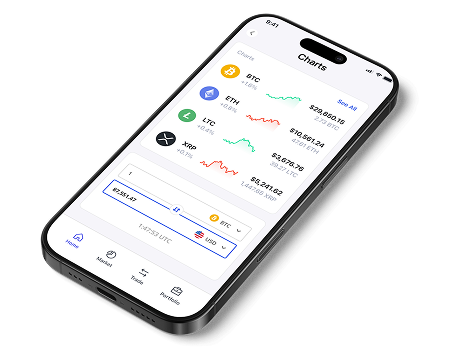
Stay Informed, Stay Ahead
Finage Blog: Data-Driven Insights & Ideas
Discover company news, announcements, updates, guides and more
